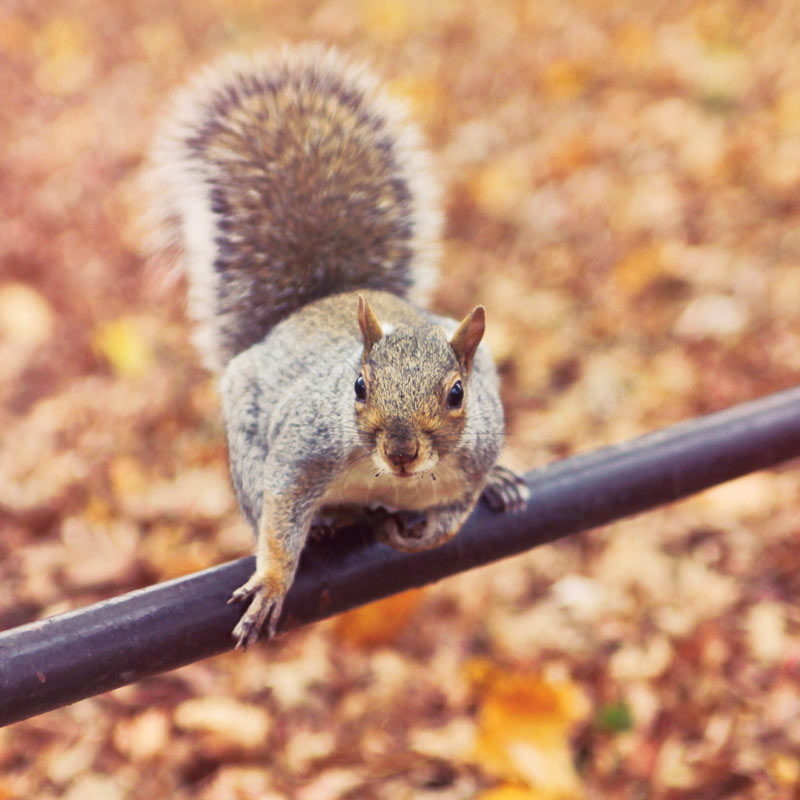Busy, Busy, Busy
The Great Outdoors | September 1, 2019

By Jackie Scharfenberg, Forest Naturalist, Wisconsin Department of Natural Resources
With fall in the air we, gray squirrels (Sciurus carolinensis), must take care of the kits, gather and hide food, build nests, and avoid danger.
My Home
I prefer a hollow tree trunk to build my nest, made of bark and plant fibers. If I can’t find a tree hole, I’ll have to make a large ball-like rainproof nest. This ball-like nest called a drey. It is built high up in the branches and made of leaves. In winter, we use these same nests insulated with moss, thistle down, dried grass, and feathers to keep warm, and sometimes share a nest with several others for extra warmth. We may hold up in our nests for several days during very cold or snowy periods. All of our busyness starts in late winter with our first mating season in late January/February and birth of our kits. This is repeated in early summer with a second litter of kits, which are raised without any help from the males.
My Diet
In our small home ranges, among the hardwoods with bushy undergrowth, we spend a lot of time searching and caching food during the daylight hours to avoide the heat of the day. Using our excellent senses of smell, touch, and sight, we find all kinds of foods from nuts, seeds, and fruits, to buds, sap, inner bark, bulbs, and grains. We also eat insects, bird eggs, young, frogs and small rodents. We also gnaw on bones for the minerals, and to wear down our ever-growing incisors. We are messy eaters; leaving food scraps everywhere. We drink a lot of water, but when it’s not available, we lap tree sap or munch on green plants.
Each season, I hide several thousand caches of food in trees or the ground. With my excellent spacial memory that uses landmarks, along with my sense of smell, I find my hidden food, as well as the caches of other squirrels!
Our Tails
To get all this work completed, we possess incredible adaptations. Our dark gray fur with brown and white overtones provides great tree camouflage. Our big, awesome, bushy tails help us more than most people realize! We use our tails to communicate, and it helps us to keep our balance when climbing and jumping. Our tails also shield us against weather (rain, sun, wind and cold), and we use it to hide and take cover. Perhaps most amazing, it is a perfect float when we are swimming!
Our Other Survival Tools
Our one-inch ears provide keen hearing. We communicate with loud “barks,” churring, squeaks, and body language like tail vibrating and wagging.
Believe it or not, we can climb an 80-foot tree in 20 seconds and, quickly descend it head first. We jump with ease from branch to branch and tree to tree. To conceal ourselves, we lie flat on top of a limb or sit perfectly upright on a branch. To reach choice morsels, we hang by our hind feet head down. To check for enemies, we peek around tree trunks. On quiet water, we can swim up to two miles; we drown if the water turns rough. All these tools help to avoid predators like foxes, hawks, coyotes, bobcats, weasels, cats, snakes, owls, raccoons, and opossums.
Next time you find yourself among the hardwoods, look for us busy, busy, busy squirrels and listen for our excitable “barks.”



